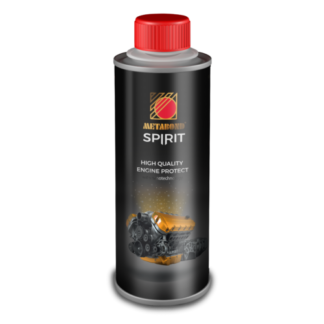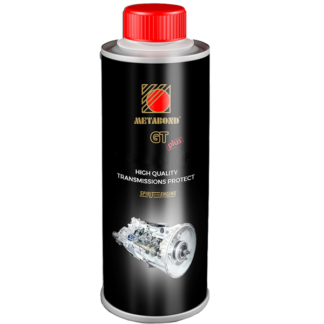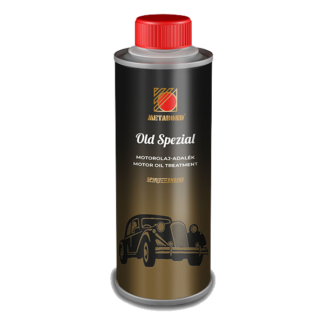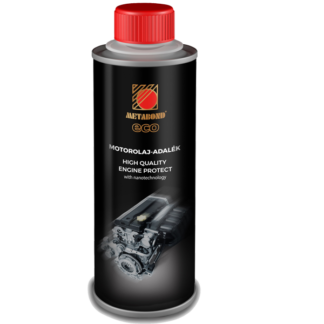The development and proper application of modern lubricants have significant economic implications. The optimal selection of lubricants can result in substantial savings through energy conservation, wear reduction, shorter maintenance periods, and longer repair intervals. These savings can be quantified in billions in industrialized countries.
The properties and quality of lubricants depend on the origin and viscosity characteristics of the base oil used, the process parameters applied during production, and the type and amount of additives (additives) mixed into them.
Application Motivation for Using Additives
In rare cases, the desired properties of lubricants can be achieved using a single type of additive. Most often, mixtures of different active ingredients are used. Such “additive packages” can mutually complement and enhance each other’s effects (a phenomenon called synergism), but they can also produce opposite results by impairing each other’s effects.
Over the past 10-15 years, considerable international efforts have been made to save raw materials, materials, and energy. In the case of commercial vehicles, activities have focused on reducing fuel consumption while emphasizing environmental issues. Economical consumption has become a crucial argument during sales. In addition to the optimization of combustion chambers in engine design, improvements in fuel preparation, minimization of air and rolling resistance, and increased efficiency, the role of lubricants is among the potential energy-saving efforts.
Basic Considerations for Energy Savings in Lubricants
Energy-saving opportunities related to lubricants generally start with the following basic findings:
a. The lowest friction loss occurs when the tribological system is designed to provide a liquid-state lubrication (i.e., “full lubrication”) under all operating conditions. To achieve this goal, primarily design changes are implemented.
b. In the case of liquid-state lubrication, friction reduction can be achieved either by choosing low-viscosity base oil or by using oils with good viscosity-temperature relationships (light oils, multigrade oils).
c. Since choosing low-viscosity oils increases the risk of mixed friction surfaces growing in the entire operating range, the use of special friction-reducing additives (Friction Modifier, FM) can prevent the increase of friction loss when added to the lubricating oil.




Friction Modifiers
To understand the mechanism of action of friction modifiers, we first need to briefly clarify the concept of friction losses influenced by lubricants and the causes of their occurrence. Of the chemical energy provided to a combustion-based engine in the form of fuel, about 20% is used in the form of mechanical friction energy. The majority of this occurs in the piston and ring area, while another portion is attributed to the bearings. Therefore, it is not surprising that efforts to reduce friction losses focus on engine oils and transmission oils. As mentioned earlier, modern lubricating oils fulfill their role in reducing energy loss caused by friction between solid bodies in two ways:
First: They create a continuous (closed) liquid film between the solid materials. In this imagined ideal lubrication case, the friction losses of the system depend only on the dynamic viscosity of the lubricant under the current operating conditions.
Second: In cases where a closed, continuous liquid film cannot form between the friction surfaces (low sliding speed, high specific load, low oil viscosity at operating temperature), the “additive package” must react with the friction partner to form protective layers and thus prevent scuffing. This long-known group of additives, which includes extreme pressure protection additives and wear protection additives, is responsible for enhancing the load capacity of the friction system. In the load (or temperature) range where these mentioned additives are effective, of course, smaller friction losses occur than with oils that do not contain additives. As a result, all additives that form interfacial layers are often referred to as friction modifiers (“friction modifiers”) in the literature (11, 12). However, friction here is still about two orders of magnitude higher than in the case of fluid friction (8). This is why the lubrication technician considers increasing the proportion of surface areas exposed to fluid friction as one of the viable ways to reduce friction losses.
Ashless Additives for Extreme Pressure and Wear Protection
In contrast to the extremely complex mechanism of action of metal-containing high-pressure additives, where diffusion of released metals in the upper atomic layers of sliding surfaces, eutectoid reaction conditions, and plastic deformations have been observed, the formation of reaction layers in ashless wear inhibitors occurs in a relatively transparent manner.
When one surface moves on another surface, there is always some resistance to this motion. This resistant force is called friction. If the friction is small and uniform, easy sliding is possible. The other extreme is when the friction is so large or uneven that motion becomes impossible, and the surfaces overheat or suffer significant damage.
Under boundary friction conditions, the sliding surfaces are separated by the polar molecules of the additive, which “stick” to the surface. These help to reduce the friction coefficient value.
The area of greatest interest to lubricant chemists is mixed friction, which involves both dry boundary and hydrodynamic conditions.
In the purely hydrodynamic range, there is perfect, complete separation of the metal surfaces, resulting in a low friction coefficient. The most important parameter in this case is the fluid viscosity.
- DRY FRICTION: There is physical contact between the surfaces, causing strong wear.
- MIXED FRICTION: Physical contact between the friction surfaces is intermittent. The lubricant reduces the wear rate compared to the previous case.
- FLUID FRICTION: The moving surfaces are completely separated from each other by the lubricant. In this case, wear is theoretically zero.
Metabond: A “High-Tech” product for optimal wear protection
Anyone who has ever dealt with engines knows that conventional lubricants have a limit to their lubricating power. This limit is where the oil film breaks down due to pressure, speed, and temperature conditions, causing metal-on-metal friction and subsequent wear. This results in immediate wear of the surfaces, a phenomenon familiar to almost every driver as piston scuffing.
The researchers at Metabond started thinking differently. They recognized that the real problem revolved around lubrication strategy. They concluded that the solution was not better lubrication, which had been attempted for generations with various additives, but rather to reduce or eliminate friction.
To do this, an entirely new molecule had to be developed. This molecule is based on petroleum, a combination of a metal-organic compound and a hydrocarbon complex compound, in a new configuration.
Even if one should be cautious with the word “sensational,” it must be used here: this molecule truly possesses properties that are astonishing. Let’s look at the three most important ones:
- When subjected to pressure, the molecule enters into a harmonic coupling with the surface molecules of the metal surface.
- This molecule can withstand multiple times the pressure that an oil molecule can resist.
- It has extremely high slipperiness.
These three outlined properties of the new molecule enable the formation of an inseparable molecular layer on the metal surface. This layer does not break at critical points, the “peaks,” even when the pressure and temperature reach their highest values. The peaks no longer burn in but are bypassed and forced into the valleys.





